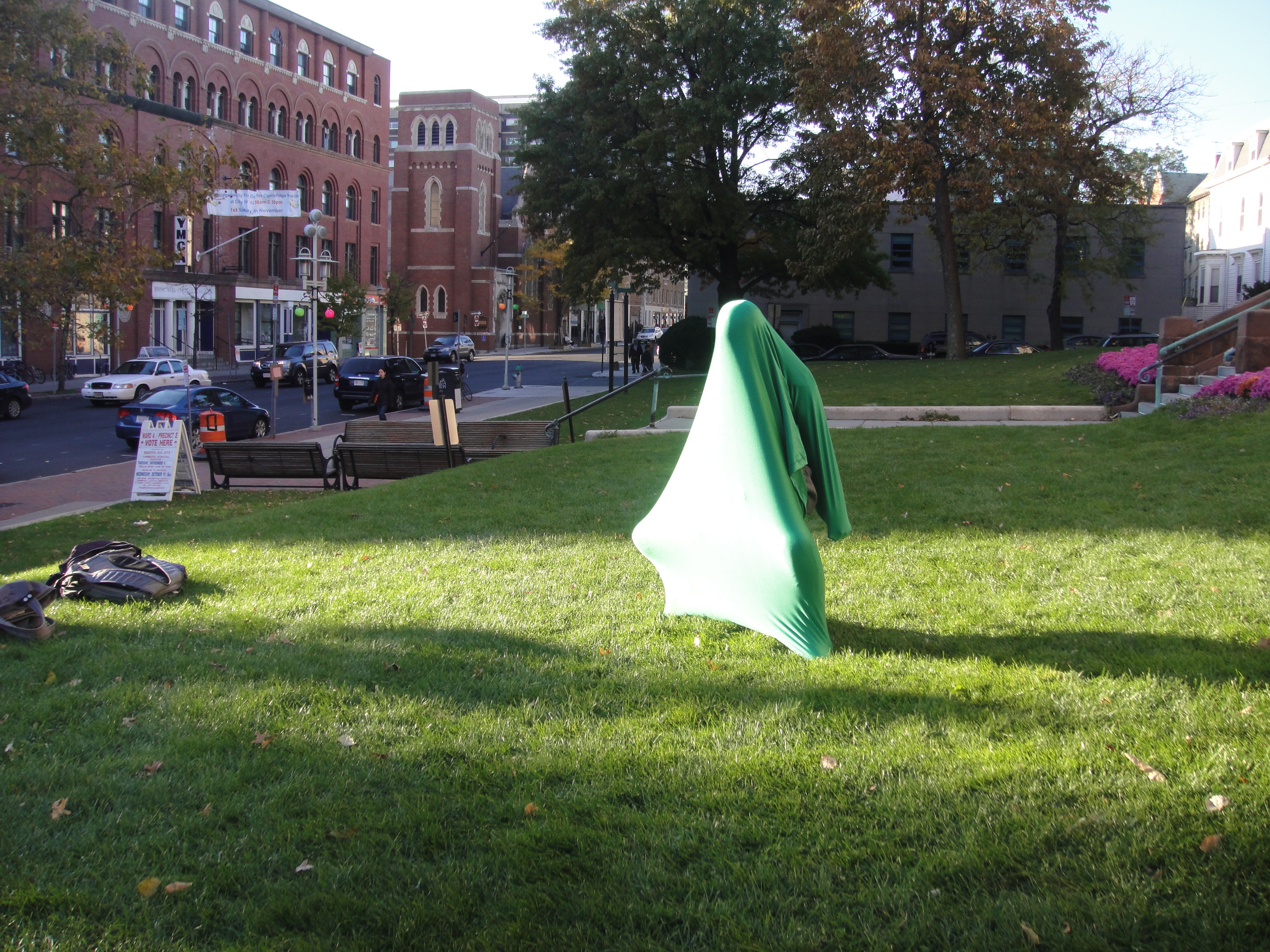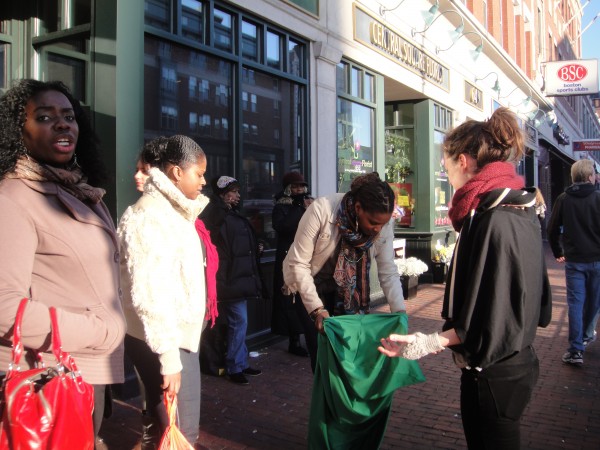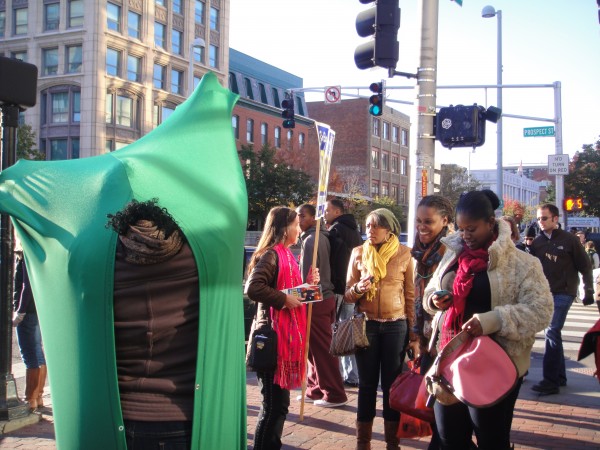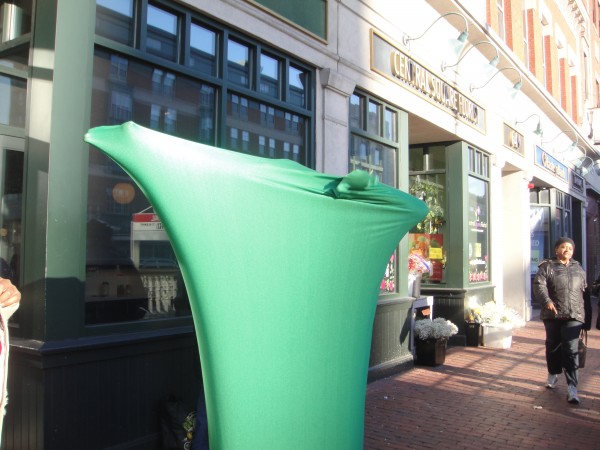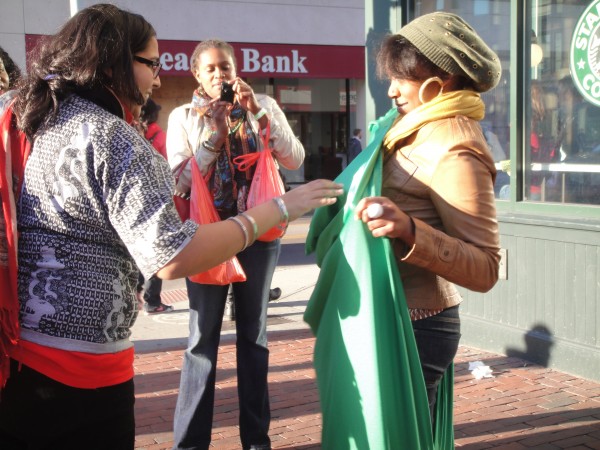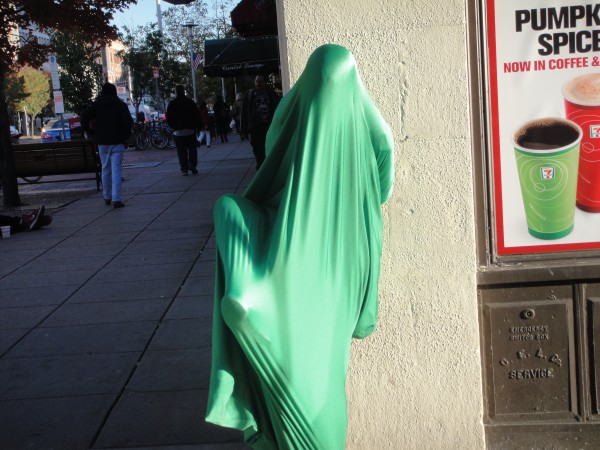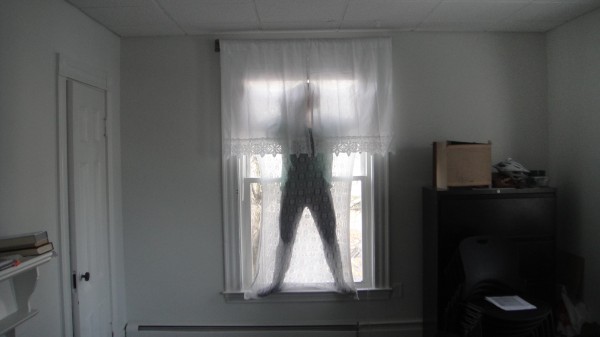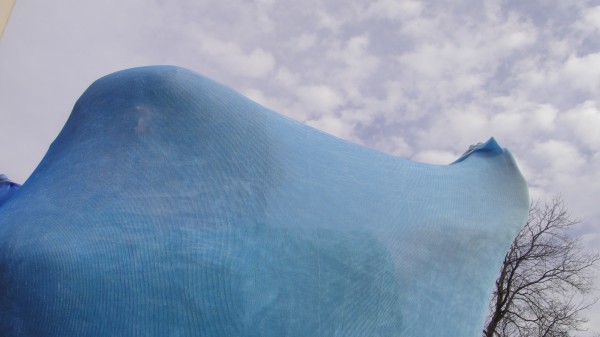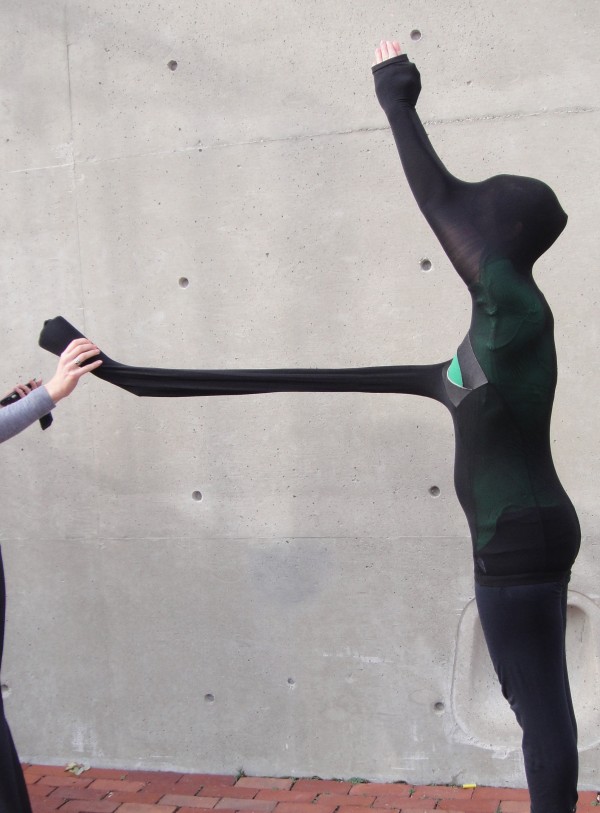year
post
Jan 3, 2012
2012 01 03 Unknown Armature Body Socks
For a couple of months now, I've been researching and testing some body sock prototypes, as part of a series of prosthetic research initiatives I've been calling Unknown Armature. I've mentioned body socks before; they're wearable therapeutic tools for people with sensory processing disorders. You can't find sensory processing challenges in formal diagnostic catalogs like the DSM—not yet, anyway—it's a rangey and diffuse phenomenon, difficult to locate neurologically, and contested as to its real bio-medical and pyschological meaning.
And these are disorders, plural. They don't look the same on everyone. A person can be hypersensitive to stimuli—perceiving ordinary noises as shrill or piercing, or ordinary touches as aggressive attacks. Or she can be hyposensitive—under-aware of sensations like cold, or indifferent to physical pain. The sock is a kind of envelope over the wearer's experience: She can see through the stretchy fabric, but she can't be seen, and she can be enclosed while also exploring the world. The sock invites the wearer to push hard against its strong lycra, engaging its powerful resistance as an exercise, or a dance, or to engage an enemy proxy. It provides strong feedback and invisibility, an interior/exterior mediator for animated action.
These prosthetics are in fairly common use, especially for young people with autism spectrum conditions, and if you try one on, it's pretty compelling. So I first re-positioned a body sock I ordered from this seller, making it a public prosthetic for people with or without the formal conditions that call for it.
Some colleagues and I tried it on as an experiment, trying to understand it as a sensorium and also as a kind of ad hoc performance piece. We invited others to try the experience and create some conversation around it.
People were drawn to it, and intuited immediately the possibilities for stretch and movement.
In some cases, I spoke to people about the purpose behind its original design—that's me on the far right below. And in other cases, I didn't. I wasn't sure what to make of the tendency for it to become a wearable for improvised dance or theater. Was I hoping to be an educator? Was it more interesting to document the wearer's experience, or to witness the wearer as a persona on the street? Was it enough to blur the lines between who wears this in an organized, therapeutic way, and who might need one intermittently, or suddenly in a public place? I wasn't sure then, and I'm still uncertain.
I then started thinking about making customized body socks—tweaking the original bright lycra and thinking about context-specific socks. Ones you could use to amplify your wishes in relation to your surroundings, play with interiority and exteriority.
And this last one I think of as a sketch—a tight enclosure with an opening for communication, should the wearer want it.
More on this to come.

